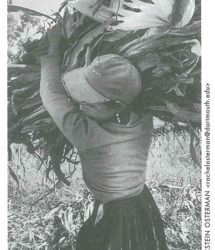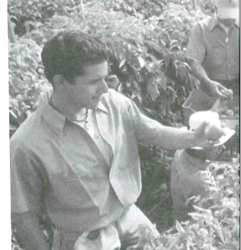A Review of Infections and Inequalities
The Modern Plagues

Infections and Inequalities: The Modern Plagues by Paul Farmer (University of California Press, 1999)
I read Paul Farmer’s book while on a short visit to Venezuela, and found that setting, at this historical moment in time, particularly pertinent and highly conducive to the arguments Farmer makes. While the book’s message and appeal is (unfortunately) universal, it is particularly relevant for those interested in Latin America. Most of the numerous, and convincing, examples of the interactions between inequalities and tuberculosis, and inequalities and HIV/AIDS (the two infections prioritized), are drawn primarily from Haiti and Peru, where Farmer and his colleagues have worked for many years.
As I began Farmer’s book late this summer, I had just finished listening to a television speech by the new Venezuelan president emphasizing health and the social sector as the most important for the nation. The president-criticized by outsiders as an autocrat, but tremendously popular among most Venezuelans who in the recent election gave him an overwhelming democratic victory-called for a peaceful revolution to revitalize the country, ridding it of corruption, taking care of street children (‘the children of the nation”) and in particular, combating the obscenity of having 80% of the population living in poverty in a country as rich as Venezuela. He seemed set to engage in quite a similar kind of social restructuring called for in Farmer’s book as a requisite to improved health (for the total population).
What will actually happen in Venezuela, and how quickly, is still an open question, and whether a real reduction in inequity will take place, cannot be certified, but for the first time in 40 years, Venezuelans of different backgrounds told me, there is optimism and hope in the country. In terms of health, the hope is that at least the health services will be more equitably available to the totality of the citizenry. The health sector is being restructured for that purpose. Farmer says, “Greater access to effective medical services is but a necessary first step in stanching these epidemics” (17). And thus, because of its implications, the renaming of the Ministry of Health to the Ministry of Health and Social Development, is highly significant since it makes it clear that health is linked to, and dependant on, a variety of social factors and that these, not least of which is poverty and the degree of social and economic inequity, are directly related to people’s health.
Farmer, in his book, makes a compelling case for the interconnection between inequity and infectious diseases and assembles a vast amount of evidence showing the preponderance of infectious diseases among the poorest segments of all populations (and especially so in the poorest of the world’s countries). He says, “Clearly we live in a time of unprecedented wealth and technological advancement. But a growing and globalizing market economy has not, as promised, lifted all boats. Instead, increasing world wealth has been linked to a sharp rise in inequalities of various sorts” (p 280). And he also deplores the commercialization of health and all its pharmaceutical, legal and medical ‘business partners.’ “If there is no role for any but the profiteers, what sort of ‘health care environment’ have we created?” (p 279) He laments that any concern for the health of one’s fellow being seems primarily based on a crass self-interest, and he asks, “By the crude calculus of modern public health, will self-protection become the sole justification for effective measures to contain the plagues of the poor?” (p 279)
Tuberculosis has been referred to as a re-emerging disease, but not so says Farmer. It may have been out of sight and out of mind, as far as the well-to-do in rich nations were concerned, but it has persisted among the poor. It is a misnomer to suggest that TB is re-emerging. It has been emerging and persisting among the poor for a long, long time. This perspective also makes it clear that it is not primarily cultural differences and lack of patient compliance which are the crucial factors placing people at risk for TB or for AIDS and inhibiting treatment. Rather it is the structural violence of inequitable societies
One of the many strengths of Farmer’s book is that he moves us to a different perspective from that which most of us look at the world. And as the clinician and anthropologist that he is he provides us with a complete and a complex picture, drawing not only on evidence from objective clinical studies, or on more qualitative anthropological data, but also on history, economics and politics. He moves us into the real world of the patients he treats in Haiti, in Peru, in Siberia, and closer at hand, in Roxbury (Boston), and he does so with passion and with disciplined scholarship–a powerful combination; an enviable ability.
And thus, instead of presenting tuberculoses or AIDS as the modern plagues–which of course they may well be called–Farmer tells us that “inequity itself [must be] seen as the most pernicious plague of our modern era”(p 15) Inequity, because as long as it persists, as long as large reservoirs of populations in poverty persists, vast numbers of people will be at risk of a multitude of infectious diseases which will continue to be visited upon the growing numbers of people who are disenfranchised on society’s margins. Of tuberculosis, for example, Farmer notes that, “The poor have no option but to be at risk for tuberculosis; thus tuberculosis is merely one factor in an environment of structural violence (p 259). As long as inequity exists there is little chance for eradication of infectious disease. I can only agree.
Farmer refers to Amartya Sen who says, “‘When we assess inequalities across the world in being able to avoid preventable morbidity, or escapable hunger, or premature mortality, we are not merely examining differences in well-being, but also in the basic freedoms that we value and cherish.'” (p 15) And to Wilkinson, who says, “‘It is now clear? that the scale of income differences in a society is one of the most powerful determinants of health standards in different countries, and that it influences health through its impact on social cohesion.'” (15) Farmer ends his book by saying, “The poor, we’re told, will always be with us. If this is so, then infectious diseases will be too–the plagues that the rich, in vain attempt to keep at bay” (282).
I may be naive in believing that significant and necessary structural changes will occur in Venezuela, but at least they are making a start, at least they are trying. Jonathan Mann would respond to those who threw up their hands and said that changing the world was an impossible task (better to concentrate on smaller more manageable efforts) by saying that it was surely impossible if one did not try.
Venezuela is currently rewriting its constitution, and I was so inspired, both by Farmer’s book and by the process going on in that country, that after meeting the former Director of Medical Services who, as a member of the National Constitutional Assembly, is charged with rewriting the chapter on Health for the new Constitution, I sent him a copy of Farmer’s book. I strongly recommend this book to students of Latin America, to students of Public Health, and to all those concerned with health and human rights and with a healthy future for us all.
Fall 1999
Kris Heggenhougen is an Associate at the Harvard Institute for International Development, where he is initiating a research and intervention program on health and care of orphans. A member of the DRCLAS Policy Committee, he is on the faculty at Harvard Medical School where he teaches a course on Medicine, Human Rights and the Physician, and also on the faculty of the Center for Population and Development Studies.
Related Articles
Health and Wealth
The difficulties of operating in a tropical environment were already abundantly clear during the building of the Panama Canal more than a hundred years ago. “The effect of the climate on tools…
Economic Insecurity in Latin America
A 23-year old Brazilian woman was among 10,000 job applicants seeking a desk job at Banco do Brazil. When asked why she was seeking employment that actually paid less than her present…
Zamorano and its Neighbors
We walked along together, 12-year-old Lizet and I, down the narrow, ragged paths that connected the various houses of El Chaguite to one another. “Let’s call in from here,” Lizet said…




